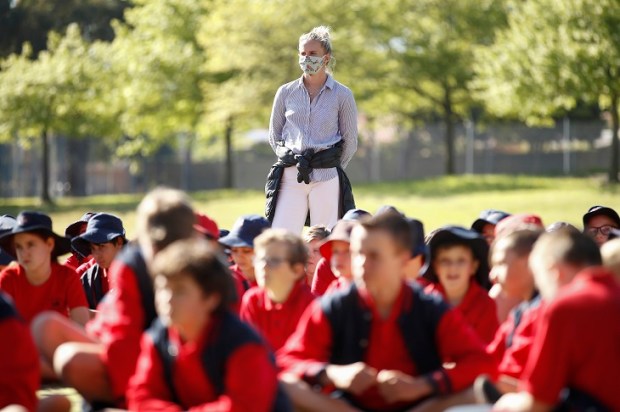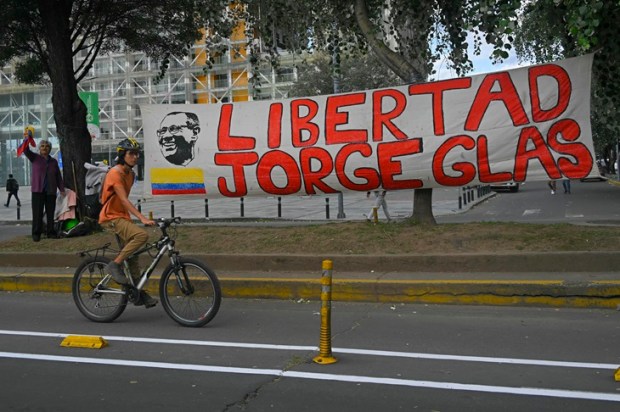Why do so many women have it in for male cyclists? All the jokes about unsightly middle-aged men in Lycra, complaints about tight clothing revealing everything it shouldn’t… It seems there’s growing female irritation with blokes getting up at the crack of dawn, gathering in large packs to go through their paces, and sitting around in coffee shops having a manly chat. How dare they have so much fun?
I’m wondering if this is just one more activity that traditionally attracts men – a boys’ club – which women resent and want to take over. It reminds me of covetous children. Haven’t we all witnessed kids who have no interest in a toy or activity until it attracts the attention of another child, particularly a sibling? Then the battle is on, as the first child seeks what the other one has.
Women seem endlessly to covet things that give men a thrill. They love to take over activities previously reserved for males – determined that men shouldn’t be allowed to enjoy anything that was traditionally their territory. Everywhere there are women making the case that men should be forced to share their toys.
Toys like bicycles. With twice as many men as women enjoying regular cycling, there’s a major push to attract more women and that means making it safer. ‘The main reason most women don’t cycle in the UK is because they think it is dangerous,’ claims this Guardian editor.
Fair enough. But according to gender researcher Kate Jelly, this means we must ‘build cycling infrastructure that is explicitly feminist’. Take a look at her bizarre article, also published in The Guardian, which argues that the reason more British men than women use bicycles is the ‘UK’s cycling infrastructure is especially hostile to women’. This female journalist is convinced that motorists have it in for female cyclists. ‘We have normalised a society in which men can move around as they please while the rest of us fear for our lives for the simple act of travelling home,’ she writes.
And the evidence for this extraordinary statement? Jelly digs up an absolutely ludicrous study which found that motorists are 3.8 times more likely to pass too closely to female than male cyclists.
Get that – drivers are nearly four times more likely to try to mow female cyclists down. That’s shocking, isn’t it? Well, hang on a moment. It turns out this so-called research study, from the Humphrey School of Public Affairs, studied only one female and two male cyclists, measuring the distance between the cyclist and the passing motorist in nearly 3,000 separate events.
Their data actually revealed almost all the motorists behaved well – all but 1.12 per cent keeping the required 3ft distance from the cyclists. And the much-heralded greater hazard for women turned out to be based on motorists passing three inches closer to the women (68ins compared to 71ins) in the tiny number of risky passes. Naturally, the researchers assume the motorist is at fault in such incidents, rather than entertain the possibility that the problem is a wandering woman who doesn’t stay on track.
Is there no limit to the lengths gender warriors will go to claim victim status for women? Not when it comes to arguing that women shun cycling for safety reasons, rather than acknowledging more mundane issues like helmet hair and the bottom-amplifying effects of Lycra. The lesson is clear – if women believe that the roads aren’t safe for them to ride, then cycling infrastructure will have to change.
Yet an element of risk-taking is surely part of the attraction of cycling for many men, who regularly sail past me on Sydney’s hazardous roads as I dutifully stick to the city’s infuriating cycle paths, complete with uncoordinated traffic lights stopping us at every corner. In the past it was often the bicycle which gave little boys their first chance to escape their mothers’ skirts. It was a taste of real freedom, even if it came with the occasional bent bike, scraped elbow, and bloody knee.
But now that more women are keen to take up cycling it is decreed that safety is paramount. That’s par for the course with the fair sex. As Canadian commentator Janice Fiamengo has pointed out, we’ve recently seen women’s obsession with safety in full flight, with women leading the push for Covid lockdowns in most countries:
‘If Covid was a war, as it was frequently depicted as being, it was one in which none of the typical masculine virtues required by war were in evidence. Gone was the valorisation of stoicism, courage, forgetfulness of self, rational risk assessment, and the curtailment of emotionalism. In their place came generalised anxiety, self-righteous vindictiveness, and the longing for (an unattainable) safety at all costs.’
Safety at all costs isn’t usually what springs to mind when facing city roads on two narrow, wobbly wheels but never fear, women will find a way.
The result is city cycling will end up being a tamer experience. That’s the point. Whenever women muscle in on men’s activities or interests, the end project is something very different, often holding far less attraction for either gender.
The classic example is the humble comic book, inevitably featuring the heroic male superhero, which provided endless entertainment for generations of little schoolboys – and a few of their female friends. But when feminism came to control our cultural narrative, it was determined these pale, stale supermales must be shoved off their pedestals.
The comic book creators started tinkering with the formula, introducing all manner of female superheroes and acceptably diverse new characters. We saw Kamala Khan, a Muslim teenager girl, became Ms Marvel, and the introduction of a new female Thor, a black female Ironman.
Well, that all went down like a lead balloon. According to Marvel Comic’s Vice president, David Gabriel, it was becoming obvious that ‘people were turning up their noses’ at the new female characters. Speaking to a 2015 sales conference about the studio’s falling comic sales, he reported fans ‘…didn’t want any more diversity. They didn’t want female characters out there’.
His words created an uproar and he was forced to backtrack, stating his company was proud of their new creations. Feminist authors produced surveys claiming growing numbers of young female comic fans and the diversity crusade continued. Recent offerings include the Secret Six’s asexual Indian character, Roshanna Chatterji, the deaf Phoenix host, Maya Echo Lopez, and Marvel’s first Latin-American LGBTQ+ superhero, America Chavez. A thrill a minute, eh?
Traditional fans obviously don’t think so. Last year the very non-woke Japanese Manga comics absolutely dominated the market, accounting for more than three of every four comics in the country. American superhero comics made up a pathetic 6.5 per cent.
Not only are audiences turning their back on the socially engineered comic industry, but Marvel’s woke superhero movies are bombing badly. Wonder Woman 1984 lost Warner Bros more than $100 million at the box office last year. According to Wall Street Journal, ‘Since the beginning of 2021, the average global box-office gross of the six films produced by Marvel has fallen to $773.6 million—roughly half the $1.5 billion average of the previous six films.’
So, there you go. Superman. Batman. Spiderman. Magical creatures who captured the hearts of generations of young people. But women had to butt in, take over and create their own heroes. Look what happened.
Endless male bastions are currently under siege. The exclusive Australian Club in Sydney is holding out, still refusing to admit female members after 146 years of men only. Sydney’s Cranbrook School is being bullied to submission, forced by a new head to admit girls. This week the school board resigned after strenuously resisting the move. Given that this is the world of Channel Contos who in 2021 encouraged thousands of private schoolgirls to publicly shame males with sexual assault allegations, it seems risky business to invite these woke, privileged young ladies into the fold. We’ll see how this pans out.
One of the most outrageous examples of women chasing men’s toys is their demand for entry into Men’s Sheds. Here we have a rare organisation which was started exclusively for males only about 15 years ago – designed particularly for older retired men to come together and support each other. But suddenly women wanted in and sheds found themselves under pressure from women who liked the idea of joining in cosy woodwork sessions with the boys. It’s led to a huge split in the movement between those still keen to promote the mateship they believe is vital to encouraging proper support for vulnerable men, and those who prefer to win brownie points from the ladies by embracing inclusiveness.
Four years ago, I had great fun making a video about this controversy and still hear from people on both sides of this fence, including men who say their sheds weren’t the same after women joined their benches. The jury is still out as to which side will prevail but given the huge numbers of women’s organisations thriving across the country it is quite remarkable that blokes weren’t allowed to keep this one for themselves.
Got something to add? Join the discussion and comment below.
Get 10 issues for just $10
Subscribe to The Spectator Australia today for the next 10 magazine issues, plus full online access, for just $10.


























Comments
Don't miss out
Join the conversation with other Spectator Australia readers. Subscribe to leave a comment.
SUBSCRIBEAlready a subscriber? Log in